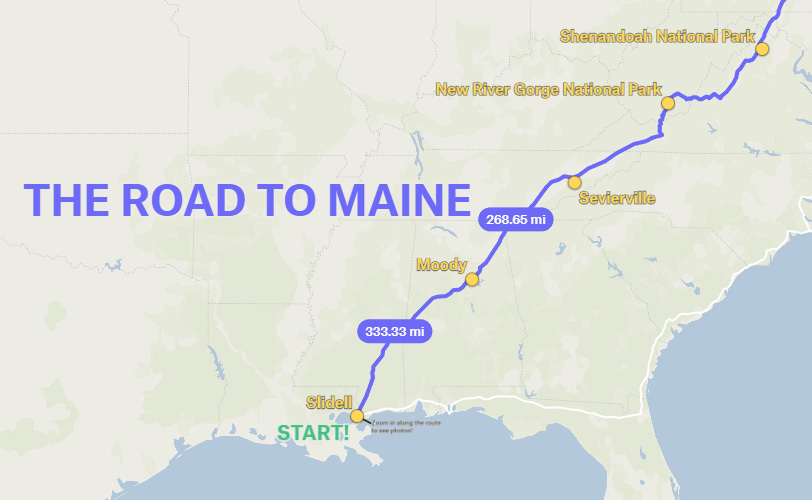Migratory Dispatch No. 2: Embracing Flexibility on New Roads
No Matter What, Never Underestimate Your Ability to Figure It Out
The first week on the road is the toughest when you are a creature of habit.
The uncertainty of it all at the beginning prompts an endless stream of often-repetitious questions: Where will we sleep tonight? Do we have enough battery power? What about diesel? Where can we fill up with fresh water? How will we go to the restroom?
What is that noise?!?
Suffice it to say, there is a fair amount of anxiety to work through as you plow toward a goal. It helps to remember that, while you might not feel ready for the big thing you are attempting, you are more than capable of figuring out whatever comes your way during the experience.
Remembering that “the only way is through” also helps. You could apply any number of other mantras to stay the course, like:
This is all part of the experience.
This is your curriculum.
Everything is an opportunity to practice.
One guaranteed way to have a bad time when living on the road is to try to stick to the same routine that serves you at home. If you expect to keep the same schedule day-in and day-out, you are setting yourself up for failure.
Flexibility and adaptability are the name of the game out here. In fact, these two are more than just attributes, they are features of the experience. Life on the road rips you from what is comfortable and forces you to decide: Keep trying to do the same old things the same old ways? Or try something new or different?
One of the great balancing acts in life is to be cautious and daring at the same time.
Cautious enough to avoid stupid mistakes, prevent burnout, and maintain a margin of safety.
Daring enough to bet on yourself, to do the things you would regret leaving undone, and to be willing to be uncomfortable in the short term so you can learn and grow in the long term.
The road forces you into a choice between flexibility and rigidity. This kind of thinking is beneficial not just for surviving on the road. It can be applied throughout your life, even your comfortable, routine life at home. Where are you stagnant? Where are you stalled? How can you improve your current way of living? What can you add, and what can you subtract?
As we continue to move through the country toward Maine — I wrote today’s letter in West Virginia’s New River Gorge National Park — the gravity of home and all its creature comforts is waning. The uncertainty never goes away, no. But as you embrace it, anxiety is replaced with curiosity. The onslaught of questions less scary and more welcomed, in fact.
Whatever happens next, happens next. You are here for it. You get to decide how you respond to it.

You can make all the plans in the world. Knock yourself out with plans and schedules and habits and routines, if you like. But when you undertake any new endeavor, remember especially to plan for your own flexibility and adaptability along the way.
Follow Along with Felt
Maps stand the test of time when it comes to documenting a journey. It is a natural medium through which to share the experience, as there is such a strong current of geography and place on any trip through the physical world.
To that end, Felt, a collaborative, web-based mapping platform, is being used to catalog our trip this summer. Felt democratizes map-making with an easy-to-start and easy-to-use model that seems well-suited for this type of application.
Follow along on the map here.
The Boondocking Count
One of the goals for the trip this summer is to boondock at least 50 percent of the time. We are going to be away from home for 42 days, so that means we need to boondock at least 21 nights to succeed.
The updated boondocking count through this morning:
Total nights = 10
Total nights boondocking = 8
—
80 percent boondocking





